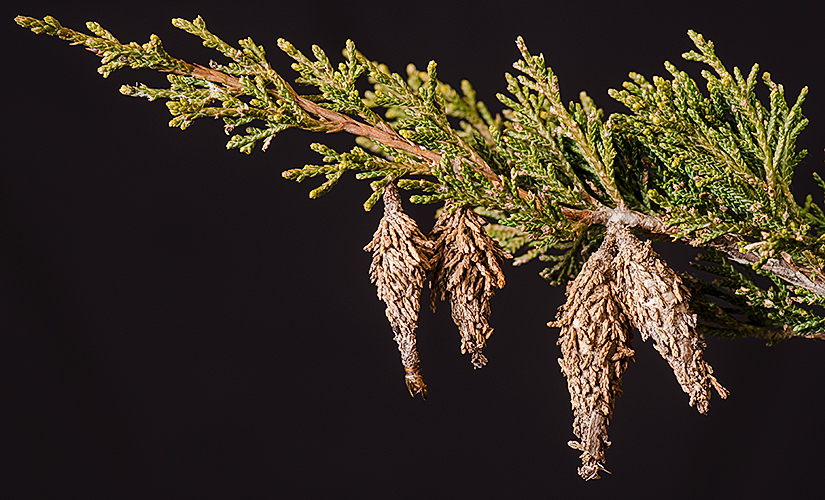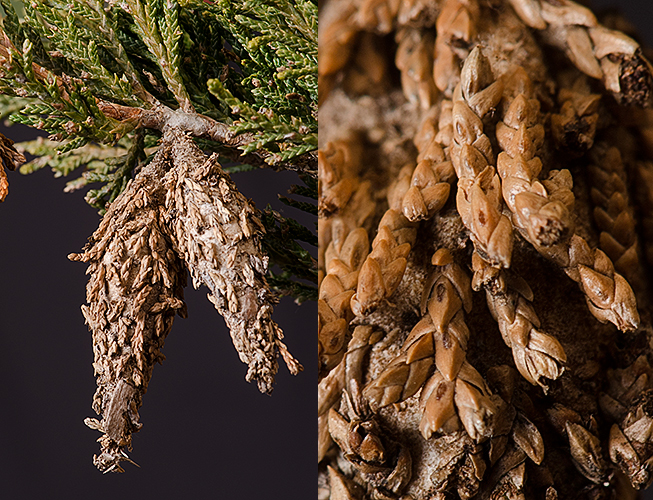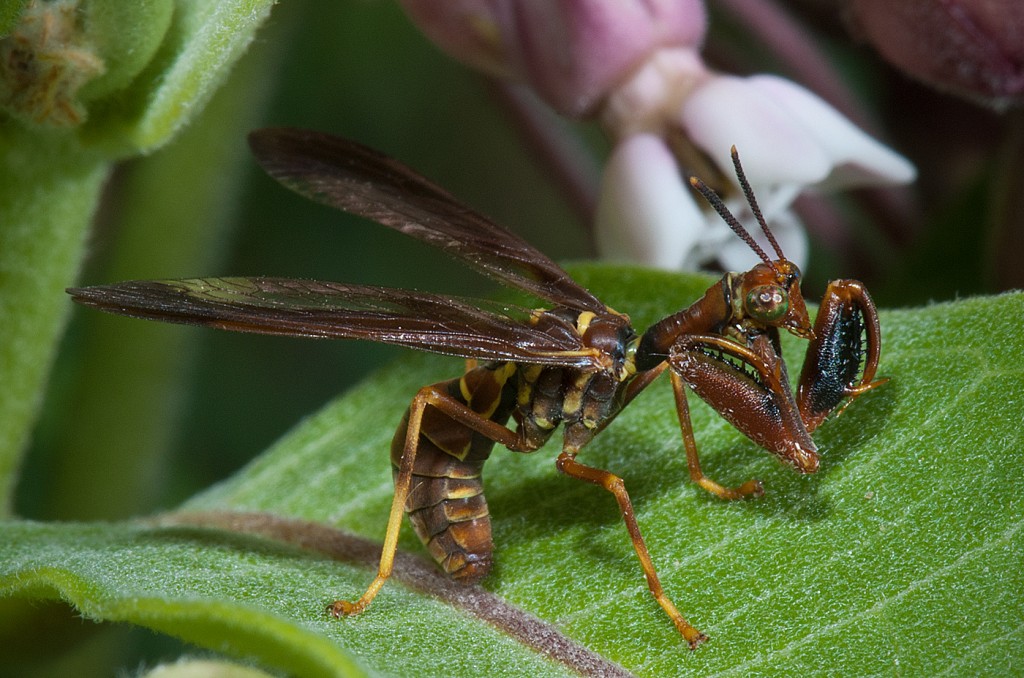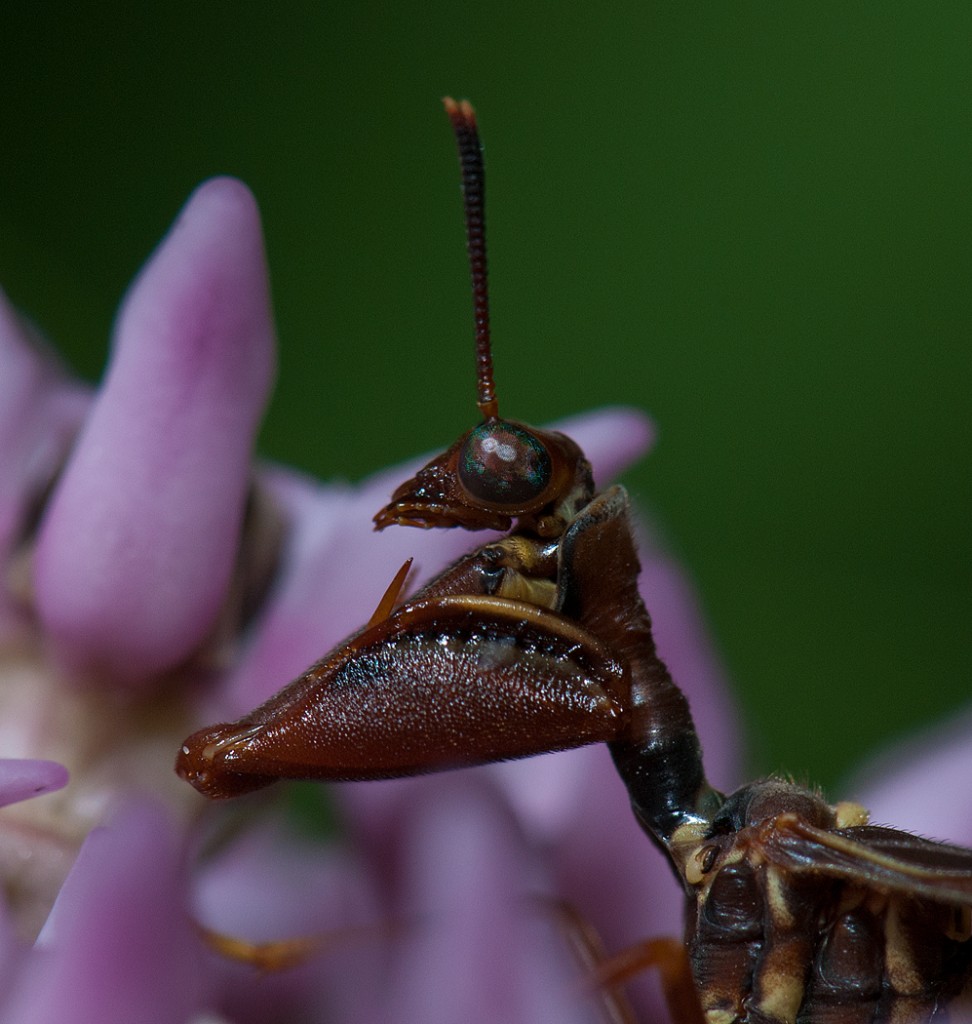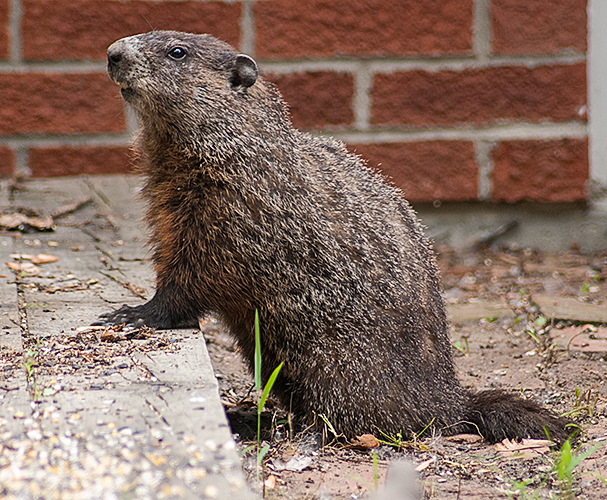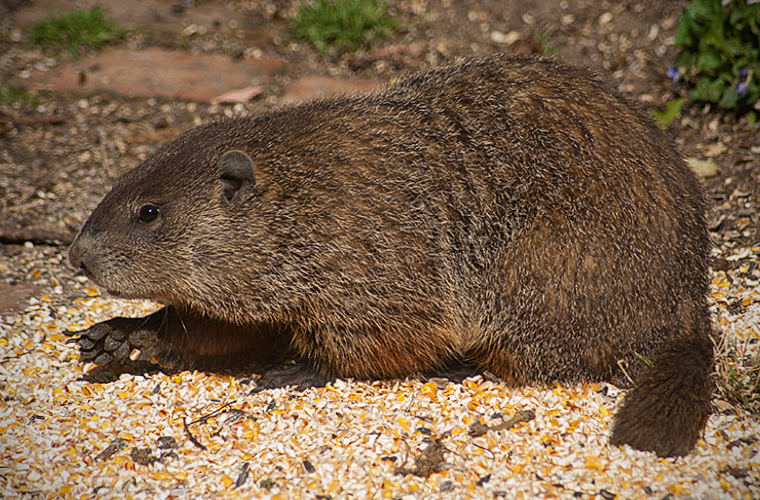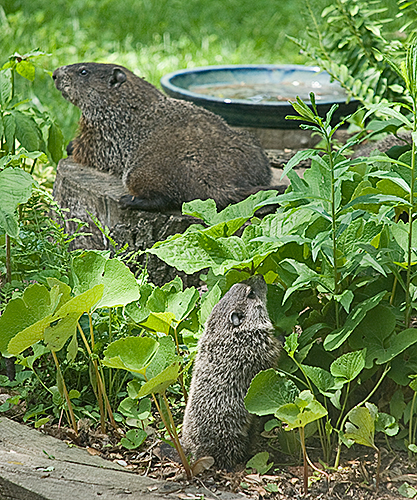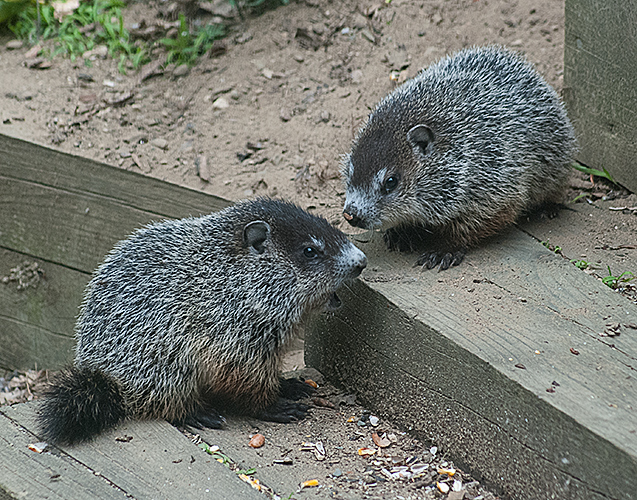The Evergreen Bagworm (Thyridopteryx ephemeraeformis) is an interesting larva. It lives in a silken bag that it carries around. In the summer, you can see its head peeking out as it feeds. It overwinters as eggs in one of these silk bags, attached to a twig. Red-cedar (Juniperus sp.) and Arbor Vitae (Thuja occidentalis) are its favorite food but it will eat Pines (Pinus sp.), Spruce (Picea sp.), Willow (Salix sp.), Maple (Acer sp.), Cherry (Prunus sp.) and other woody plants. Bits of leaf and twig from the host plant decorate its bag.
Only the male moth leaves the safety of his bag to fly in search of females in their bags. Wingless and legless, the female lays approximately 1000 eggs in her bag then leaves it, falling to the ground to die. Overwintering as eggs, the larva hatch in late spring and begin to build their own bag homes. In late summer they pupate, emerging 4 weeks later as adult moths.
I opened two bags this winter expecting to find eggs. I found a dead female moth in one and a pupa in the other. According to every book and website I consulted, they overwinter as eggs. Both of my stations are on ornamental plantings and might have been sprayed. I need to find a natural colony to observe.
Copyright 2014 by Donald Drife
Webpage Michigan Nature Guy
Follow MichiganNatureGuy on Facebook

